
Age-Related Reactions to a Traumatic Event
Describes how young children, school-age children, and adolescents react to traumatic events and offers suggestions on how parents and caregivers can help and support them.
April was first declared Child Abuse Prevention Month in 1983. Since then, April has been a time to acknowledge the importance of families and communities working together to prevent child abuse. In 2015, it was reported in the fifty states, the District of Columbia, and Puerto Rico that an estimated 683,000 children were victims of child abuse or neglect and 1,670 children died as a result of abuse or neglect. The majority of child abuse cases stemmed from situations and conditions that are preventable when community programs and systems are engaged, supportive, and include services focusing on parental resilience, trauma history, nurturing and attachment, social connections, knowledge about parenting and child development, social and emotional competence of children, and concrete supports for parents.
In recognition of this important topic, the NCTSN has compiled a list of resources for children and families, educators, advocates and policy makers, child welfare and juvenile justice professionals, and mental health providers.
A list of external resources related to child abuse prevention is available here.

Describes how young children, school-age children, and adolescents react to traumatic events and offers suggestions on how parents and caregivers can help and support them.

Explains the prevalence and consequences of child physical abuse. This fact sheet offers guidance on how to recognize and help children who are being physically abused.
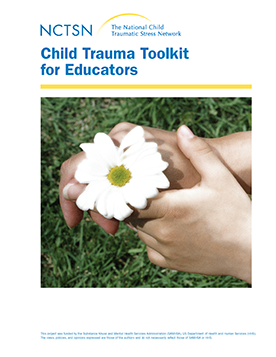
Provides school administrators, teachers, staff, and concerned parents with basic information about working with traumatized children in the school system.
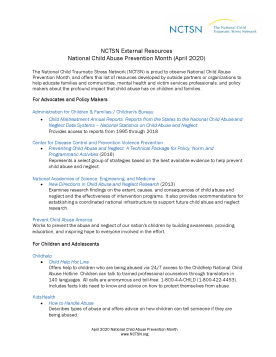
Provides external resources related to child physical abuse and Child Abuse Prevention Month.
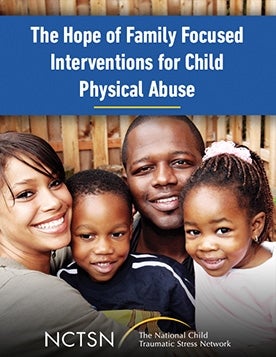
Outlines the causes and consequences of child abuse. This video describes how family-focused interventions can help families make a new beginning.
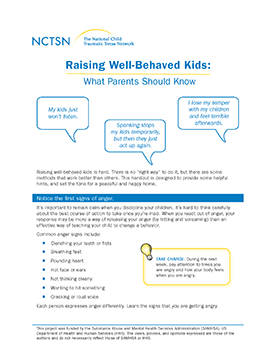
Provides parents and caregivers with information about disciplining children.
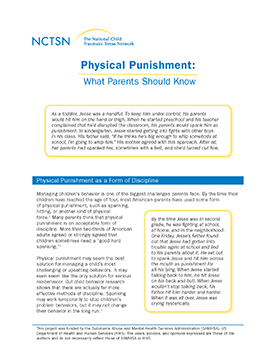
Provides parents with information on the negative impact of physical punishment, and introduces parents to effective alternatives to physically disciplining their children.
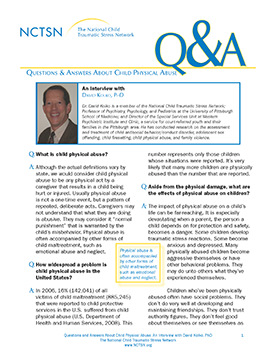
Offers parents, caregivers, and providers answers to commonly asked questions about child physical abuse.